KBN goes green - on New Zealand
A Kauri bond is a bond denominated in New Zealand Dollars that is issued by a foreign issuer (such as KBN). The first Kauri issue was completed by the International Bank for Reconstruction and Development (World Bank) and KBN completed its first Kauri bond in 2007.
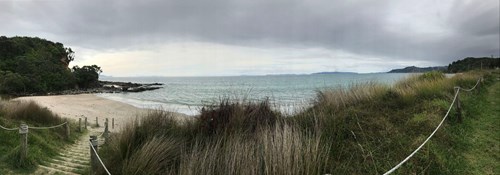
As with other international institutional markets, the bond is given a name that immediately makes it recognizable as originating from that country. For example, a Kangaroo bond in Australia, a Samurai bond in Japan, a Panda bond in China, a Maple bond in Canada and a Yankee bond in the US to name a few.
For New Zealand though, this notion doesn’t necessarily immediately surface. What is a Kauri? What is its significance to New Zealand and its people?
Well, the Kauri is in fact a tree and they are among the worlds largest and longest-living trees. They can live for around 2000 years and even today there are specimens in New Zealand which are approximately 600-800 years old. The kauri’s ancestors first appeared in the Jurassic period (190-135 million years ago), the trees are native to New Zealand and although they are not the tallest trees in the world, their extreme girth and diameter make them some of the largest trees on earth by volume of wood. By some measurements, they are in fact the second largest tree species in the world, second only to the giant redwood.
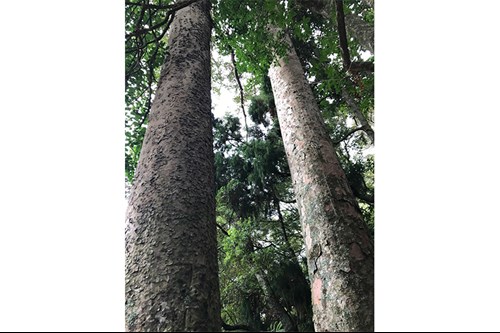
The problem with the kauri tree though, is that in addition to being tall and wide, they grow very straight, making them ideally suited to the building of ships, railways, buildings etc. And that is unfortunately what happened.
Before the 1800s, New Zealand’s North Island was covered with approximately 1.2 million hectares of kauri forest. Over the next 130 years or so, 99. 7% of these forests were felled for timber as well as being cleared for farming. It is estimated that up until the beginning of the 20th century, kauri was milled at an average of more than 236,000m3 per annum. The other problem is that they grow very slowly. In a dense naturally growing forest, a kauri can stay at 1-2 metres tall for nearly 40-50 years.
On the back of two centuries of exploitation, the Kauri 2000 Organisation evolved out of a project to mark the start of the new millennium with a goal to plant 2000 kauri on the Coromandel Peninsula on New Zealand’s North Island. To date, the trust has been much more successful than that and has planted over 45,000 Kauri on the Coromandel Peninsula. It is a non-profit charitable trust with the long term goal to recreate significant stands of kauri on public conservation land on the Coromandel Peninsula.
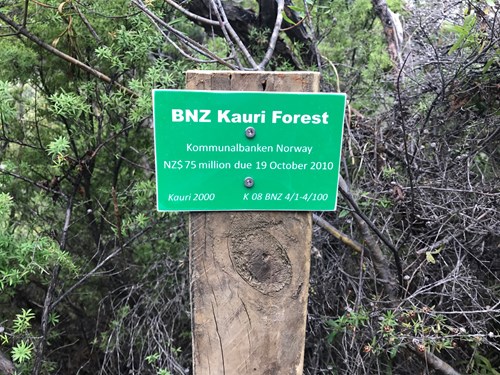
In 2007, BNZ (one of KBN’s main dealer banks in New Zealand) pledged their support for the trust and agreed to plant 100 kauri seedlings for every Kauri bond issue it arranges.
So far BNZ has helped plant over 7500 Kauri trees on the back of Supranational Sovereign Agency (SSA) bond issuance into the New Zealand Dollar market and it should be noted that KBN is a top 3 planter!
Out of the 7500 trees that BNZ has helped to plant, 700 kauri trees have been planted on behalf of KBN. This puts KBN third on the overall list of SSA planters. KBN follows closely behind both Rentenbank in Germany (1100 trees) and the International Finance Corporation (800 trees).
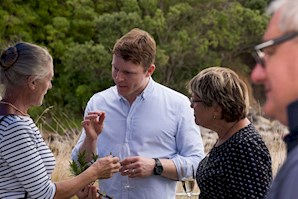
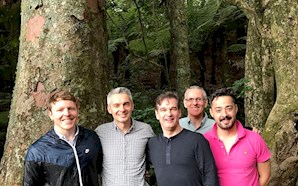
KBN was fortunate enough to travel to the Coromandel Peninsula with other SSA issuers to celebrate the 10-year anniversary of Kauri bond issuance and kauri tree related plantings. Although we were all warned not to be too disappointed by the size of our trees (due to their slow growing nature), it was certainly a thrill to see the KBN name in front of our line of plantings. It is great to think that the work we do being a long-term partner for the social welfare of the Norwegian local government sector also has a positive impact on the other side of the world.
KBN has been an active issuer in the New Zealand market for over 10 years now. Not only has this market provided low cost funding to the Norwegian local government sector, but our NZD issuance serves the dual purpose of helping environmental conservation and revives an ancient and majestic tree species that has special significance to the local Maori population in New Zealand.
If you, or your children, or your children’s children’s children’s children are ever down in New Zealand on the beautiful Coromandel Peninsula, it is highly recommend to go check out the KBN trees!